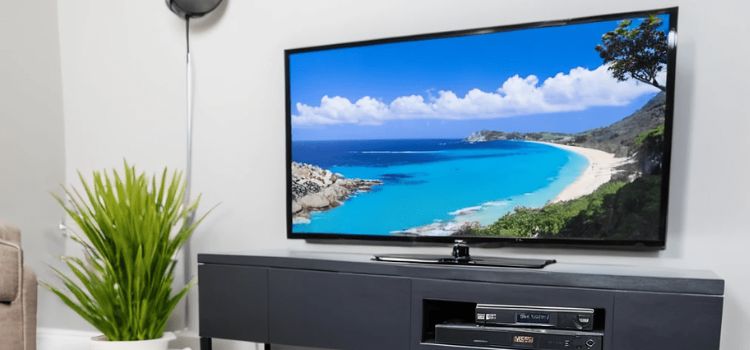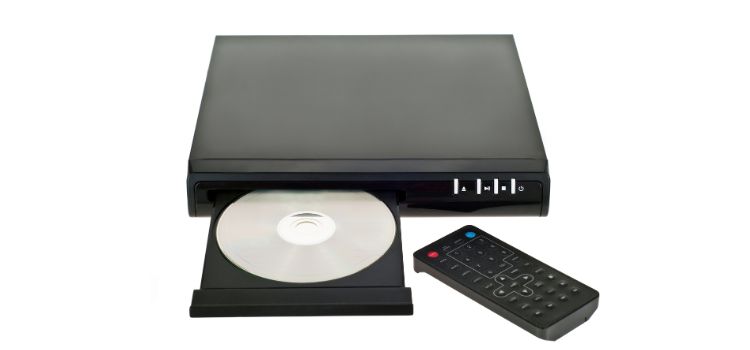As an Amazon Associate, I earn from qualifying purchases.
If your TV lacks HDMI ports or your Blu-ray player only has an HDMI output, don’t worry – there are several ways to connect the two without HDMI. In this comprehensive guide, we’ll explore various methods and provide step-by-step instructions to help you set up your Blu-ray player with your TV, even if HDMI is not an option.
HDMI to VGA Adapter
An HDMI-to-VGA adapter is one of the best solutions for connecting an HDMI-only Blu-ray player to a TV. This method allows you to maintain high-quality video output while providing a workaround for the lack of HDMI ports on your TV.
To set up an HDMI to VGA adapter: Connect the HDMI end of the adapter to your Blu-ray player’s HDMI output port.
- Plug a VGA cable into the VGA port on the adapter.
- Join the other end of the VGA cable to the VGA input port on your TV.
- If your adapter has an audio port, connect an audio cable from the adapter to your TV’s audio input or a separate audio system.
- Power on your Blu-ray player and TV, and choose the appropriate input on your TV to display the Blu-ray player’s signal.
HDMI to Component Adapter

Another viable option is using an HDMI to Component adapter. Component cables transmit video and audio signals separately, allowing you to connect your Blu-ray player to your TV even if HDMI is unavailable.
To set up an HDMI to Component adapter: Connect the HDMI end of the adapter to your Blu-ray player’s HDMI output port.
- Plug the Component cables (red, green, and blue) into the corresponding ports on the adapter.
- Join the other ends of the Component cables to your TV’s input ports.
- If your adapter has an audio port, connect an audio cable from the adapter to your TV’s audio input or a separate audio system.
- Power on your Blu-ray player and TV, and choose the appropriate input on your TV to display the Blu-ray player’s signal.
HDMI to Composite Adapter
While not recommended due to significant quality loss, an HDMI to Composite adapter is an option if VGA and Components are unavailable. Composite cables transmit video and audio signals through a single cable, resulting in lower video quality than other methods.
To set up an HDMI to Composite adapter: Connect the HDMI end of the adapter to your Blu-ray player’s HDMI output port.
- Plug the Composite cable (yellow) into the Composite port on the adapter.
- Connect the other end of the Composite cable to the Composite input port on your TV.
- If your adapter has an audio port, connect an audio cable from the adapter to your TV’s audio input or a separate audio system.
- Power on your Blu-ray player and TV, and choose the appropriate input on your TV to display the Blu-ray player’s signal.
HDMI to USB Connection (Experimental)

While not a recommended solution, some users have successfully connected an HDMI-only Blu-ray player to a TV using an HDMI-to-USB adapter. This method involves converting the HDMI signal to a USB format, which a USB-enabled TV can read.
To set up an HDMI to USB connection, Connect the HDMI end of the adapter to your Blu-ray player’s HDMI output port.
- Plug the USB end of the adapter into a USB port on your TV.
- Power on your Blu-ray player and TV, and choose the appropriate input on your TV to display the Blu-ray player’s signal.
It’s important to note that this method is experimental and may not work with all TV models or Blu-ray players. The quality of the video output may also be compromised.
Wireless Streaming
If you prefer a wireless solution, devices allow you to stream content from your Blu-ray player to your TV without needing HDMI cables. One such device is the Nyrius ARIES Home+ Wireless HDMI Transmitter System, which can wirelessly transmit video and audio signals from your Blu-ray player to your TV.
To set up a wireless streaming solution: Connect the transmitter unit to your Blu-ray player’s HDMI output port.
- Connect the receiver unit to your TV’s HDMI input port.
- Power on both the transmitter and receiver units.
- Choose the appropriate input on your TV to display the Blu-ray player’s signal.
Remember that wireless streaming solutions may introduce latency and not support your Blu-ray player’s highest video resolutions or audio formats.
Final Thoughts About Connect Blu-ray Player to TV Without HDMI
While HDMI is the preferred method for connecting a Blu-ray player to a TV, several alternatives are available if HDMI ports are not an option. The HDMI to VGA and HDMI to Component adapters provide the best video quality, while the HDMI to Composite adapter and wireless streaming solutions offer more flexibility at the cost of some video quality. When choosing a connection method, consider the available ports on your TV and Blu-ray player and your desired video and audio quality. With the correct adapter or wireless device, you can enjoy Blu-ray movies on your TV, even without HDMI.
Frequently Asked Questions (FAQs)

1. Can I connect a Blu-ray player to a TV without HDMI?
You can Join a Blu-ray player to a TV without HDMI by using alternative connection methods such as HDMI to VGA, HDMI to Component, or HDMI to Composite adapters. Additionally, wireless streaming devices can also allow you to connect your Blu-ray player to your TV without using HDMI cables.
2. What is the best alternative connection method for a Blu-ray player?
The best alternative connection method is typically the HDMI to Component adapter. This method provides high-quality video and audio output compared to other options like HDMI to Composite, which may result in lower video quality. VGA is also a good video option if your TV supports it.
3. Will using an adapter affect the video quality?
Yes, using an adapter can affect video quality, depending on the type of adapter used. HDMI to Component and HDMI to VGA adapters generally maintain good video quality, while HDMI to Composite adapters may result in noticeable quality loss due to the limitations of composite video signals.
4. Can I connect my Blu-ray player to my TV with a USB port?
While some users have experimented with using HDMI to USB adapters, this method is not widely recommended and may only work with some TV models or Blu-ray players. The quality of the video output may also be compromised. StickingIt’s best with more conventional methods like VGA or component connections.
5. Are there wireless options for connecting my Blu-ray player to my TV?
Yes, wireless options, such as wireless HDMI transmitters and receivers, are available. These devices allow you to stream video and audio from your Blu-ray player to your TV without physical cables. However, remember that wireless connections may introduce latency and not support the highest video resolutions or audio formats.
Amazon and the Amazon logo are trademarks of Amazon.com, Inc, or its affiliates.